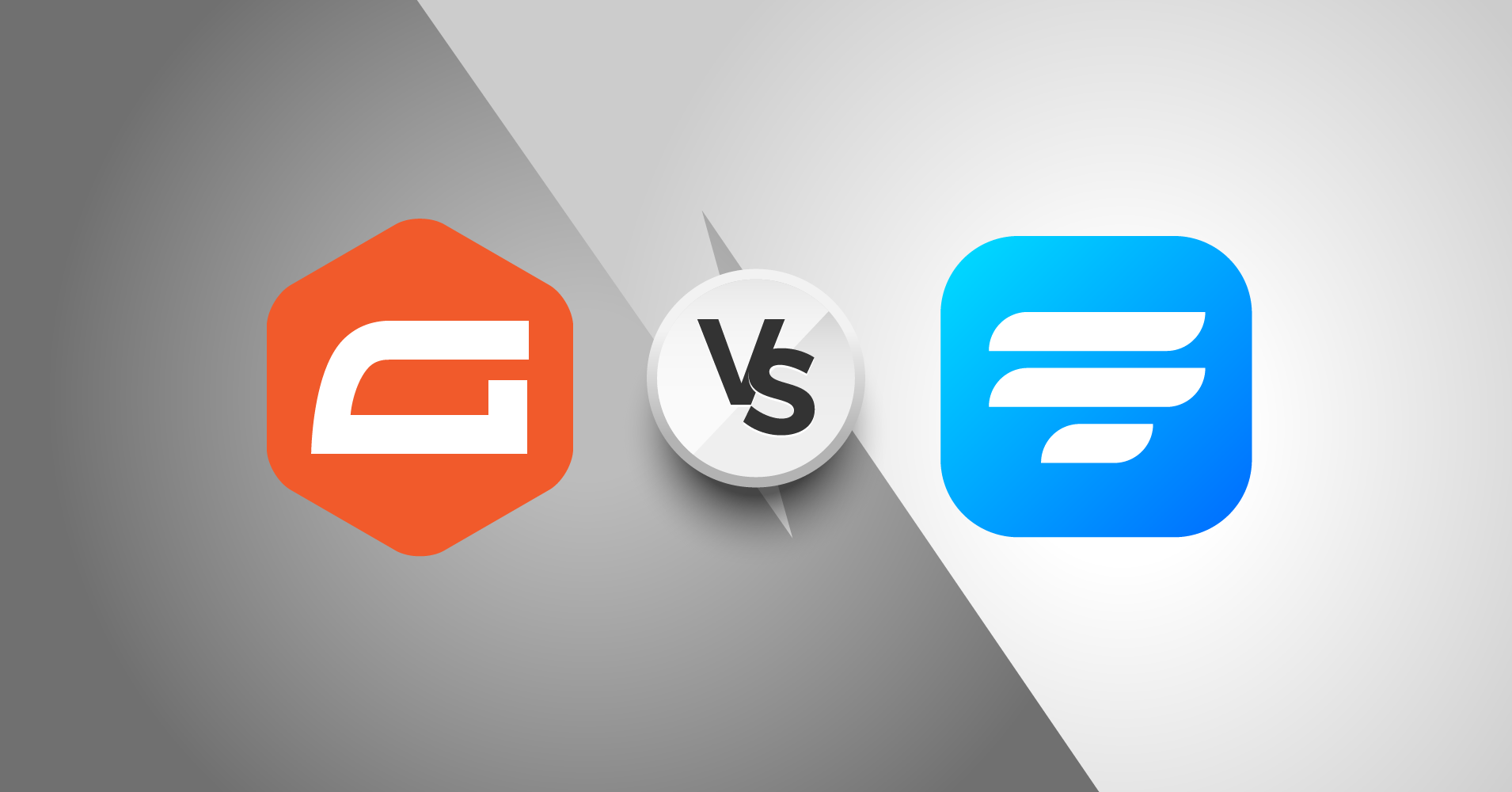It’s pretty hard to surf on the web these days without coming across any online form, especially when you are on any business website. There are various types of contact forms on the web like contact forms, order forms, inquiry forms, signup forms, surveys forms, questionaries, and more.
When it comes to adding the form on your WordPress site, usually there are a plethora of options out there in the market to choose from. This isn’t much surprise that a contact form has become an essential feature for almost all websites.
Fluent Forms Pro
Try Fluent Forms today and see for yourself!
However, something like ever-popular and free Contact Form 7 plugin should take care of your basic needs but if you want to add more functional features and more advanced forms on your site, you will definitely need to explore more commercial plugins like Fluent Forms, Gravity Forms, Ninja Forms, WPForms that could make it able to happen in a better way.
To help you in making a decision, I am taking you to look at two excellent form builder plugins for WordPress. In this article, I will be comparing two robust commercial form plugins: Fluent Forms and Gravity Forms.
Standard features that a quality plugin should have
To consider a quality plugin, both the plugins should bear quality features that a standard plugin requires. Here, I am listing some crucial features that every form builder should have to make it a complete product. Have a quick look at the features of a standard form builder.
- Ease of use
- Input fields
- Conditional logic
- Third party integration
- Entry management
- Prebuilt form templates
- Mobile responsiveness
- Conversational forms
- Spam filtering
- File upload
- Layout features
- Multi-column layouts
- Documentation & support
- Licensing & pricing
These are the key features of a core WordPress form builder that every person should consider before fixing their mind on them.
Gravity Forms vs WP Fluent Forms: points of comparison
First of all, you should know that it’s no surprise that both Gravity Forms and WP Fluent Forms are packed with features. Both plugins provide a good number of features and functionalities. Here is a quick comparison of the key points of the two plugins.
The above comparison table shows comparative data of both form builder plugins that make you able to make a decision.
Gravity Forms vs WP Fluent Forms: Features in details
Though both the plugins are comprehensive tools for building forms in WordPress, still there are a number of key differences in their offerings. Let’s get started by describing the features of a standard form builder in terms of both plugins.
Ease of use
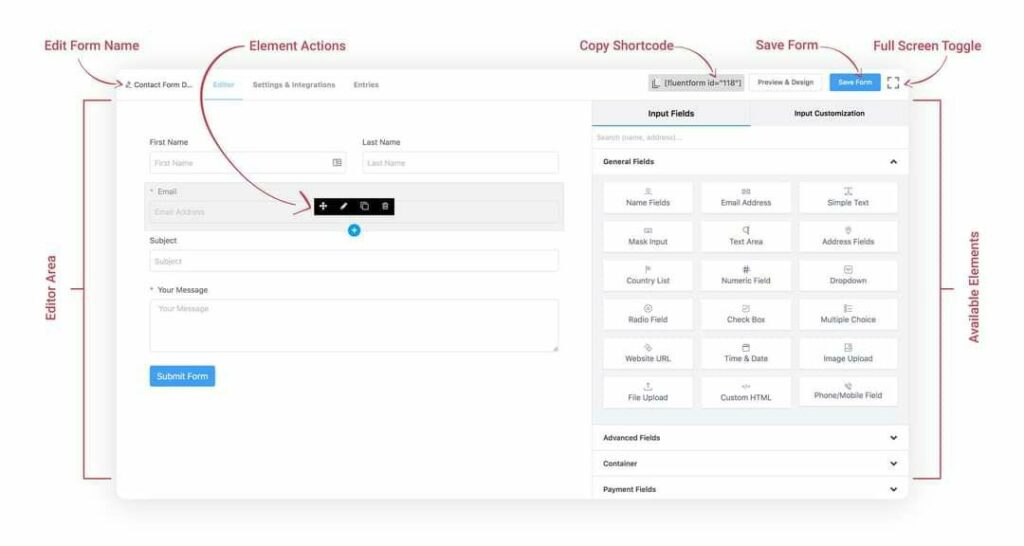
WP Fluent Forms is a smart form with ease of use and it’s the most beginner-friendly form editor as I have stated earlier. The interface of the plugin is easy to use for its users. You don’t need to hire someone or you don’t need to consult with anyone about its usage.
In the admin section, there is a preview part that allows you to track the changes you make when you configure the table. This part allows you to make perfection on the customization of form creation.
Drag & drop facility of the form plugin allows you to add any kind of field and you can remove easily as well. Using WP Fluent Forms you can easily swipe or rearrange the input fields on your tables.
WP Fluent Forms provides you precise documentation to make your usage easier. A wide range of precise documentation has given on the website. Here is the link to the documentation given below.
Have a quick look at Fluent Forms Documentation.
Gravity Forms also provides a drag and drop facility for its users’ ease of use. Moreover, there is a bit learning curve when using Gravity Forms.
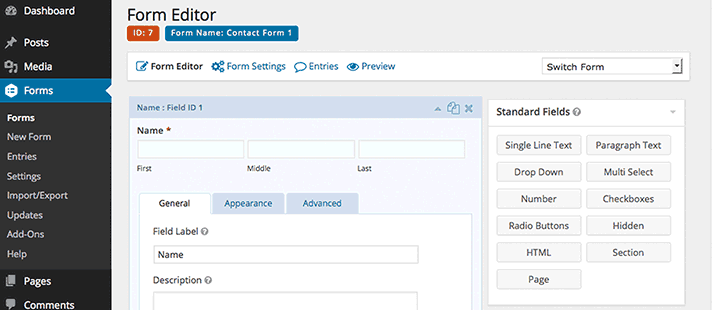
In Gravity Forms, there aren’t any pre-built form templates that can be used by a single click. If you want to use Gravity Forms, you need to add them manually; meaning you have to add every form field one by one.
In the Gravity Forms, you will not have any ‘Preview’ option on the same page to track your customization. Therefore, you have to always click the preview button to view the changes
Fluent Forms is a feature-rich contact form plugin that allows you to create any kind of simple to advanced forms easily. There are tons of features available in Fluent Forms that are completely free of cost. Let’s have a look at a few of the most notable features that make Fluent Forms the best contact form plugin available in the market.
Input fields
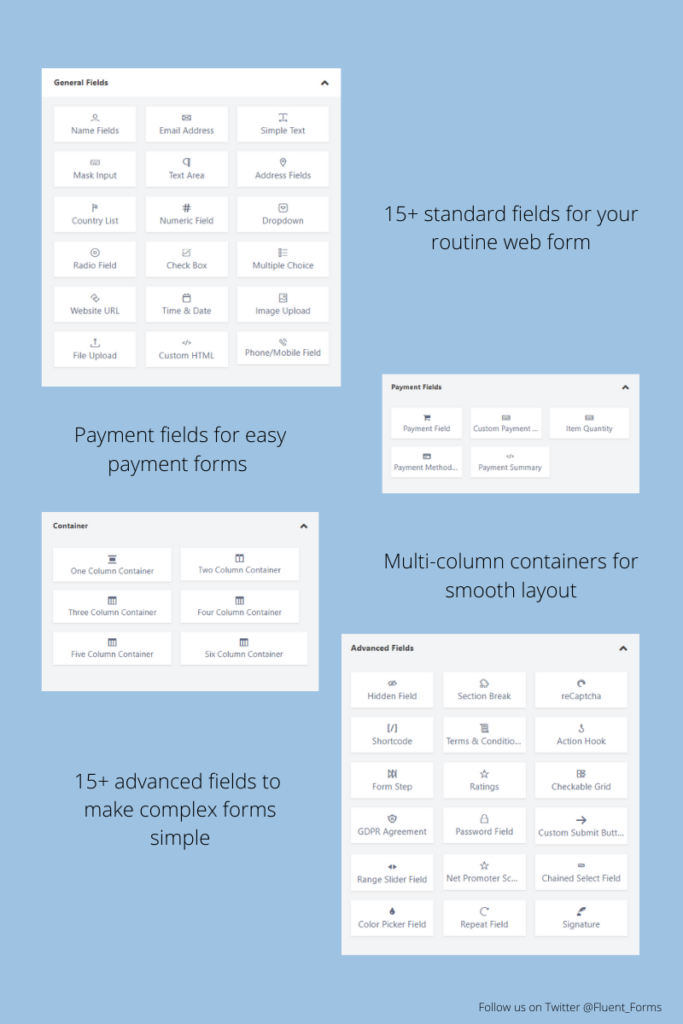
There are 45+ input fields that can be used to create any kind of form using Fluent Forms on your WordPress, and you can get 25+ from them for free. You can use drag and drop functionality while using the input field or just can click on the respective field then the input field will automatically be placed on the selected space.
Moreover, advanced fields contain file upload, image upload, section break, form-step, ratings, net promoter score, and payment fields like coupon, payment summary, etc.
In this case, the Gravity Form also provides you with similar functionality all the way. It also has 30+ fields only a handful as standard basic input fields and the drag & drop facility you can have while using the plugin.
So, here in this part of the comparison, you can see that Fluent Forms is providing more input fields than Gravity Forms. So it can be said that Fluent Forms wins the race, both in terms of the number of input fields, and fields offered for free.
Conditional logic
With conditional logic, your form will dynamically change based on the selections or criterions the user makes while filling out the form. This feature is especially helpful when you want to create a smart survey form and change questions on the basis of feedback provided by your users. Interestingly, both the form plugins contain this powerful feature.
Fluent Forms provides you a smart way to meet up the feature on your form. You will be able to deploy conditional logic on form fields, email routing, input field container, conditional email forwarding and so much more. To learn more about conditional logic, you can go through the documentation of the Fluent Forms.
You also get to use conditional logic with Gravity Forms, however, it’s much more limited. You can use it to show or hide input fields, sections, etc. and configure a form. But that is not nearly enough. Thus, Fluent Forms clearly wins here.
Third party integration

WP Fluent Forms allows you to have external integrations with different email marketing service providers. You can integrate your form with MailChimp, and Slack using WP Fluent Forms without adding any pro-Add-on. You also can have an opportunity to integrate your form with the ActiveCampaign, Campaign Monitor, GetResponse, moosend, etc. using the WP Fluent Forms using a pro-add-on. Moreover, you can extend that to over 3000 apps through the Zapier integration for as low as $59.
On the other hand, if you want to integrate these email marketing features with the Gravity Forms you have to individually install additional add-ons and if you integrate services like Zapier, you also need to include an
| Features | Fluent Forms | Gravity Forms |
| Slack | Free | Pro license ($159) |
| Stripe | Premium starting at $59 | Pro license ($159) |
| Trello | Premium starting at $59 | Pro license ($159) |
| Twilio | Premium starting at $59 | Pro license ($159) |
| User registration | Premium starting at $59 | Elite license ($259) |
| Partial form entries | Premium starting at $59 | Elite license ($259) |
In this part, we see that integrating any kind of service with WP Fluent forms is way more easy and cost-effective than that of Gravity Forms. And these are only a select few. Using WP Fluent Forms, you can get MailChimp and Slack for free and you can add more services by purchasing premium features. Hence, clearly, WP Fluent Forms wins the race.
Entry management
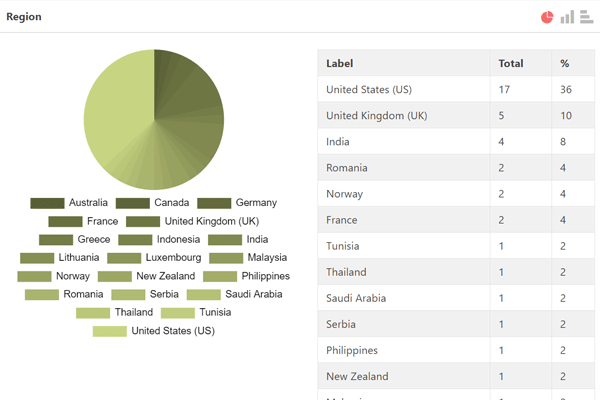
Entry management is one of the most crucial features of a form builder. Basically, the entries page enables you to browse all entries generated through users. From this single screen, you can browse, sort, mark as favorite and adjust your entry with a diversity of options. And with Fluent Forms PDF Addon, you can also generate PDF files for free.
Both plugins provide the same facility in a bit different ways. With Fluent Forms, you can filter, edit, delete the items using the Entries pages. Optionally, Admin can see raw JSON data and copy the data and use it in another system. You can also, export the data as CSV and use that data in any other system.
With it’s a
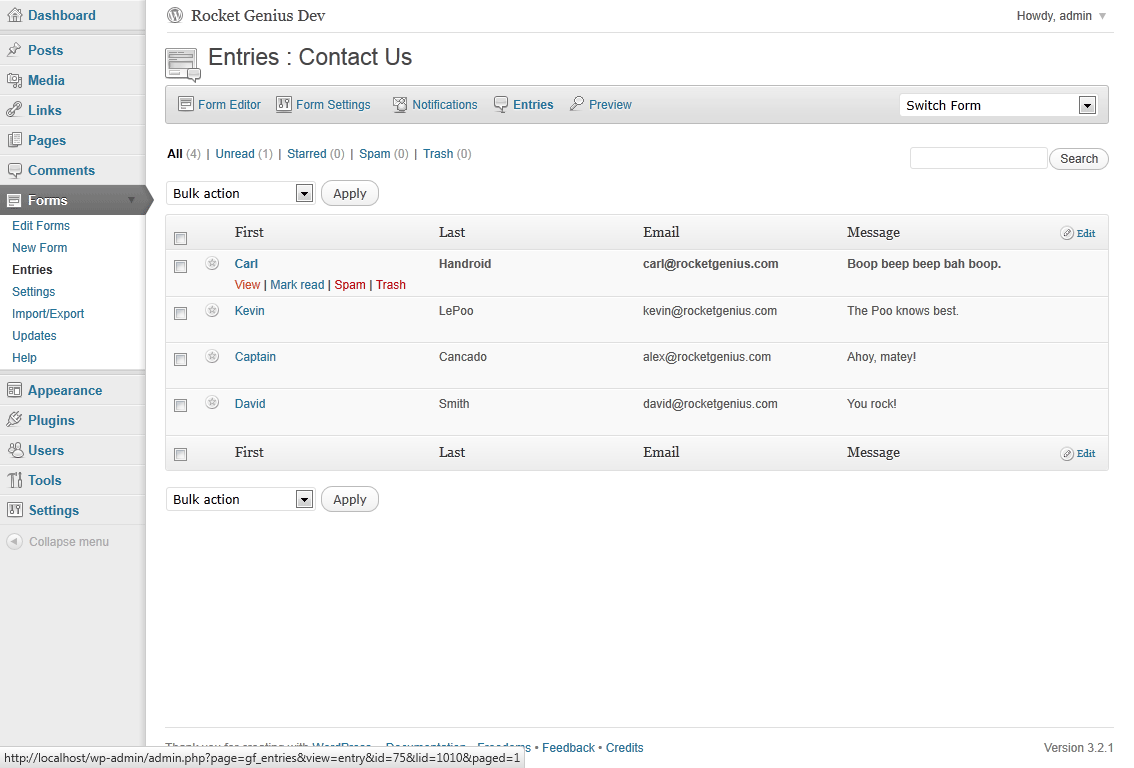
On the other hand, Gravity Forms does the same job almost in a similar way. In the Gravity Form entry pages, you can have a filter toolbar, entry quick toolbar, and entry actions. You also can use the bulk actions to apply for the multiple entries at once. And if you need to make a change in a specific part of the form, all you have to do is select the checkbox next to each entry item. You also can pick and choose which columns should appear on the list.
However, with a few functionalities more in the basket, Fluent Forms has an edge over Gravity Forms where form entries are concerned.
Prebuilt form templates
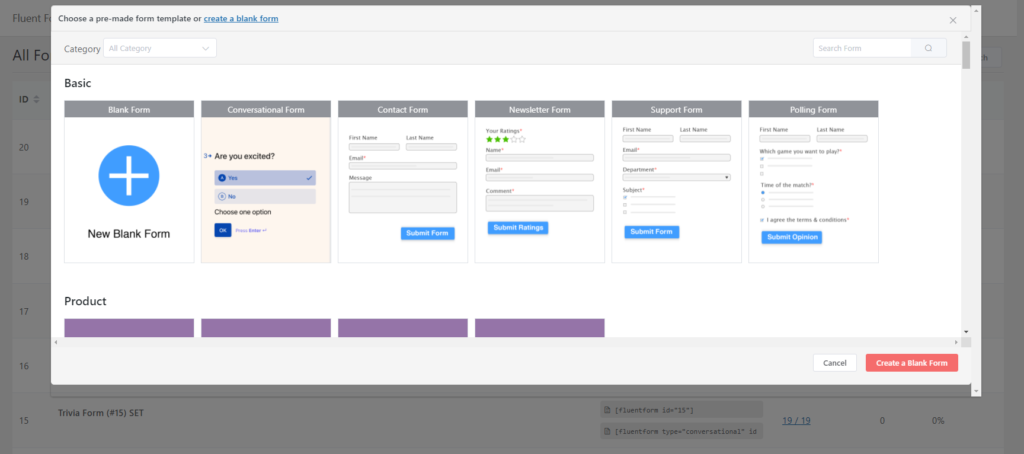
In WP Fluent Forms, you will get over 70 prebuilt templates. 25+ of which are available for free. That’s more than any what any other form builder can provide. These templates are beginner-friendly. So whether you need a simple contact form, a multi-file upload form, or even a conversational form, you can create them easily using these templates. No code required.
On the other hand, Gravity Forms doesn’t provide such types of pre-built options for its users. So you need to put form fields manually even to create a simple form here.
Mobile responsiveness
In today’s world, mobile responsiveness is the demand of time. We know that without a mobile-responsive interface, any product like form builder can’t prove its worthiness. Both the plugins WP Fluent Forms and Gravity Forms are responsive in type. Hence, if you are worried about mobile-responsiveness, you can easily go with any of these form builders.
Conversational forms
Classic forms are always going to be our comfort zone. But what is you want to spice things up? You can take the world by storm with the help of conversational forms. These are fun, interactive, and super efficient. These will take up an entire webpage so the visitors have no distraction.
Moreover, the one-by-one question approach gives users a human feel from your brand. All these make conversational forms efficient and they have lesser form abandonment rates. You can create awesome conversational forms using Fluent Forms for free. And an upgrade will offer you more functionalities like layout customization.
However, it is rather sad to say that Gravity Forms has no such feature to offer. There are some addons available that were designed by various third-parties. Unfortunately, they don’t rise up to the occasion.
Spam filtering
Both WP Fluent Forms and the Gravity Form provide you with spam filtering facilities that make your form more secure. Using Fluent Forms you can have options like Google reCAPTCHA, honeypot, Akismet, hidden field etc. facilities. Moreover, there are many other features like restrict forms, deny empty submissions, etc. that can help you put a stop to unwanted submissions.
Apart from reCAPTCHA, Gravity Forms also provides various options for spam filtering like a honeypot, Akismet, etc. in their spam filtering options. So it’s a tight race, but features like form restrictions, reject empty submissions do give Fluent Forms an edge.
File uploads
The file upload field permits form users to upload a file with their form submission. You may limit what type of file a user may upload, or the number of files via the customization tab. This is one of the most demanded features of a contact form.
And to make things more interesting, Fluent Forms also offers a separate image upload field. So if you only need to deal with images, you can use this field.
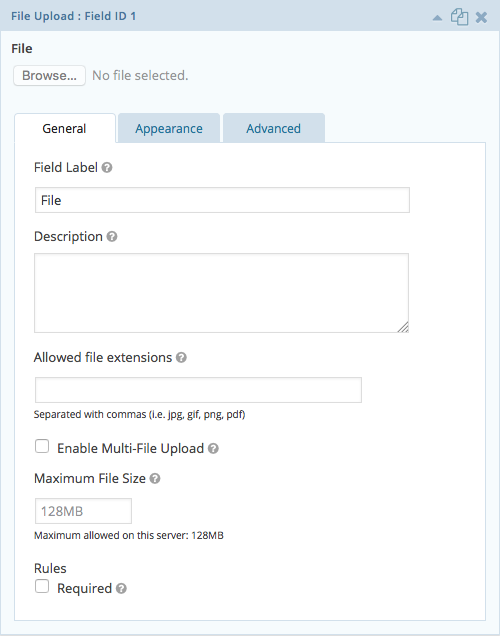
You can enable your users to upload files using the WP Fluent Forms and Gravity Forms. In WP Fluent Forms, you can get upload different types of file formats. Gravity Forms also allows you to include different types of file formats using your forms.
It’s a must obvious issue that most of the companies nowadays add this feature on their respective websites to collect resumes from their visitors. Both form plugins provide you the same facility to the user. After analyzing the portion of the text it seems that the result is a tie.
Layout features
Layout features are truly outstanding in WP Fluent Forms. Its easy and user-friendly layout system can help you navigate to create an enchanting form. You can select the Label Alignment in three segments and these are “Top”, “Left” and “Right”. What is more, a user can set the help message position as he wants. Asterisk position can be set and modified according to requirements.
However, the form layout system is somehow different in Gravity Forms. Surely it will be critical for entry-level users in somewhat. Because it does not offer all layout options in the same way.
Using Gravity Forms you need to install an additional plugin for customizing the form layouts of your forms. So, any amateur form user could face difficulty arranging the layout. It means you can not bring many modifications to the form by using the layout system.
After a discussion, it can be perceived that WP Fluent Forms is the winner in this section because you don’t need to add extra plugins for this purpose.
Multi-Column layouts
One of the most notable features of WP Fluent Forms is its multi-column feature. Using this field you can add multiple columns in your form by default. You don’t need to install any extra plugins or
Moreover, these containers come with the conditional logic function. So by setting up a suitable condition, you can make them interactive to individual user’s actions. So cool, right?
On the other hand, Gravity Forms plugin doesn’t provide you such an amazing feature by default. If you want such a facility using Gravity, you need to face extra hassle installing another plugin maned Styles & Layouts. This is somewhat tedious to use any kind of website.
Therefore, once again, WP Fluent Forms wins the race.
Documentation & support

So far WP Fluent Forms is well known for its awesome documentation and dedicated support. All the features and functionalities are described precisely on the documentation part of the plugin. In the documentation part, you can have a detail explanation for each feature. And to make things even interesting, you will also find graphic video tutorials walking you through each and every step.
Gravity Forms, on the other hand, also provides extensive documentation. However, their support is distributed according to the license purchased by the users. The elite license gets much priority support, and other licenses have one year of ticket-based support. This is rather disheartening.
Technicalities can sometimes be confusing, and mere documentations are often not enough. Fluent Forms undoubtedly wins this round thank to the unfaltering devotion to customer satisfaction.
Licensing & pricing
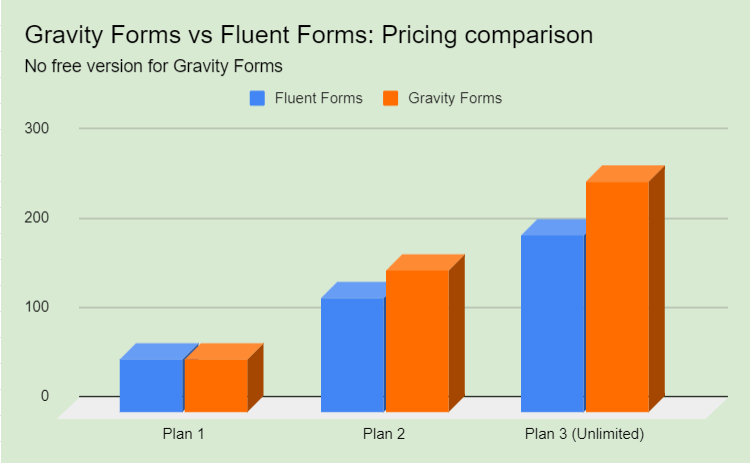
The good thing is that the Fluent Forms plugin is a freemium plugin that also provides lots of features and functionalities free of cost and you can enjoy most of the features and functionalities just by activating the plugin on your site. What Fluent Forms offers for free, most form builders don’t even include in their premium plans. Users are often left to look for additional add-ons.
In the premium section of Fluent Forms, you can get the same features maintaining a standard quality with a less price compared to Gravity Forms. The plans start at as little as $59, and you can bag an unlimited lifetime license for only $799. But that’s not even the best part. No matter which price plan you go for, you will get all the features and integrations. So the only deciding factor here is your need and nothing else.
On the other hand, Gravity Forms is a premium plugin that offers several types of pricing plans with high costing to its users. Using Gravity Forms, you can’t get any feature without costing a penny. Their pricing plan usually ranges from basic to elite licenses for the users.
In the pricing sector, WP Fluent Forms wins the comparison as it provides more features with a flexible pricing plan.
Final verdict
| Features |  |  |
|---|---|---|
| Input Fields | 45+ | 40+ |
| Prebuilt Templates | ||
| Conversational Forms | ||
| Payment Integration | ||
| Conditional Logic | ||
| User Registration | ||
| Post Creation | ||
| Slack | ||
| Export/Import | ||
| Multi-step Form | ||
| File Upload | ||
| Form Submission by Ajax | ||
| Anti-spam | ||
| Repeat Field | ||
| Checkable Grid | ||
| Custom CSS | ||
| Front-end Editing | ||
| Visual Reporting (Charts, Graph) | ||
| Mask Input | ||
| AWeber | ||
| Country List Field | ||
| Zapier | ||
| Mailchimp | ||
| HubSpot | ||
| ActiveCampaign | ||
| CampaignMonitor | ||
| ConstantContact | ||
| ConvertKit | ||
| GetResponse | ||
| iContact | ||
| MooSend | ||
| WebHook | ||
| MailerLite | ||
| Twilio | ||
| CRM/Marketing |
Both the plugins are excellent in their own scope and they are highly functional in creating dynamic forms on your site. But there are some basic differences that make the two plugins distinct from one another. To make
After considering the various factors that go into making a form builder the best, the verdict is quite clear. And in case you want to learn more about Fluent Forms, here’s a breakdown between the free plan and a premium package.
I hope this write-up helped you to choose between Fluent Forms and Gravity Forms. And if you like the post or if you have anything to share relevant to the issue, please let me know by leaving a comment below.
Fluent Forms Pro
Try Fluent Forms today and see for yourself!

